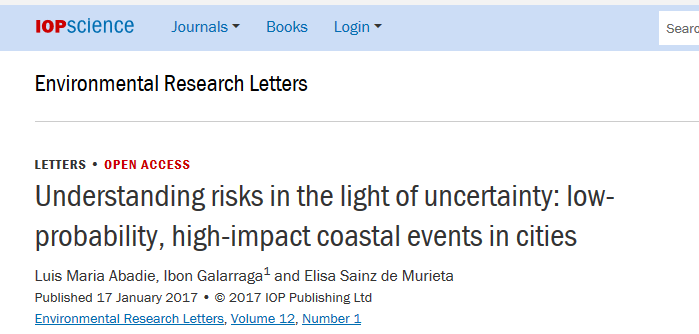27 urtarrila, 2017
Published by BC3Research David Moreno at 27 urtarrila, 2017
Categories
Ecosystem recovery from anthropogenic disturbances, either without human intervention or assisted by ecological restoration, is increasingly occurring worldwide. As ecosystems progress through recovery, it is important to estimate any resulting deficit in biodiversity and functions. Here we use data from 3,035 sampling plots worldwide, to quantify the interim reduction of biodiversity and functions occurring during the recovery process (that is, the ‘recovery debt’). Compared with reference levels, recovering ecosystems run annual deficits of 46–51% for organism abundance, 27–33% for species diversity, 32–42% for carbon cycling and 31–41% for nitrogen cycling.
30 urtarrila, 2017
Published by BC3Research Eneko Garmendia at 30 urtarrila, 2017
Categories
Monetary valuation of the environment is increasingly embedded in policy. Despite broad claims that valuation is policy-relevant, there is widespread frustration that it has not widely improved environmental outcomes, that it obscures many other types of values, and presents unintended consequences. We argue that this is, in part, because of a tendency to overlook the mechanics of how valuation tools and data are embedded into the institutions (regulations, norms, rules, schemes) that mediate decision-making.
30 urtarrila, 2017
Published by Maria Jose Sanz BC3Research at 30 urtarrila, 2017
New BC3 Journal Article published: "Haeni, M., et al. (2017), Winter respiratory C losses provide explanatory power for net ecosystem productivity, J. Geophys. Res. Biogeosci., 122, 243–260"
30 urtarrila, 2017
Published by BC3Research Luis Mª Abadie Ibon Galarraga Elisa Sainz de Murieta at 30 urtarrila, 2017
Categories
A quantification of present and future mean annual losses due to extreme coastal events can be crucial for adequate decision making on adaptation to climate change in coastal areas around the globe. However, this approach is limited when uncertainty needs to be accounted for. In this paper, we assess coastal flood risk from sea-level rise and extreme events in 120 major cities around the world using an alternative stochastic approach that accounts for uncertainty.




